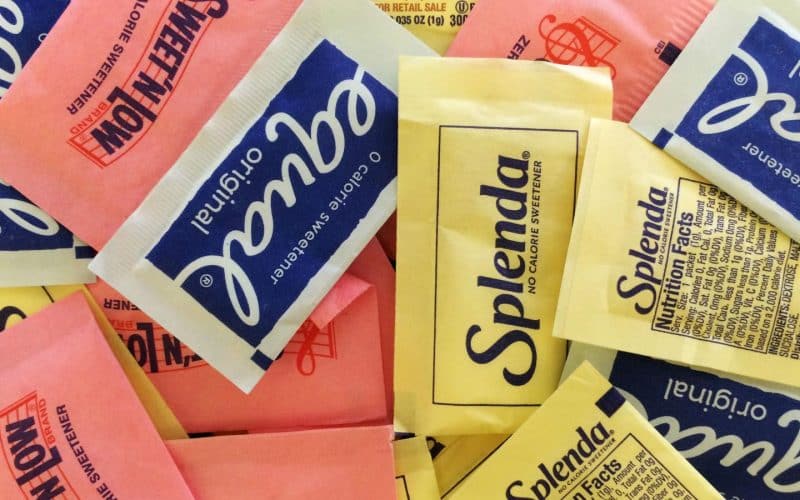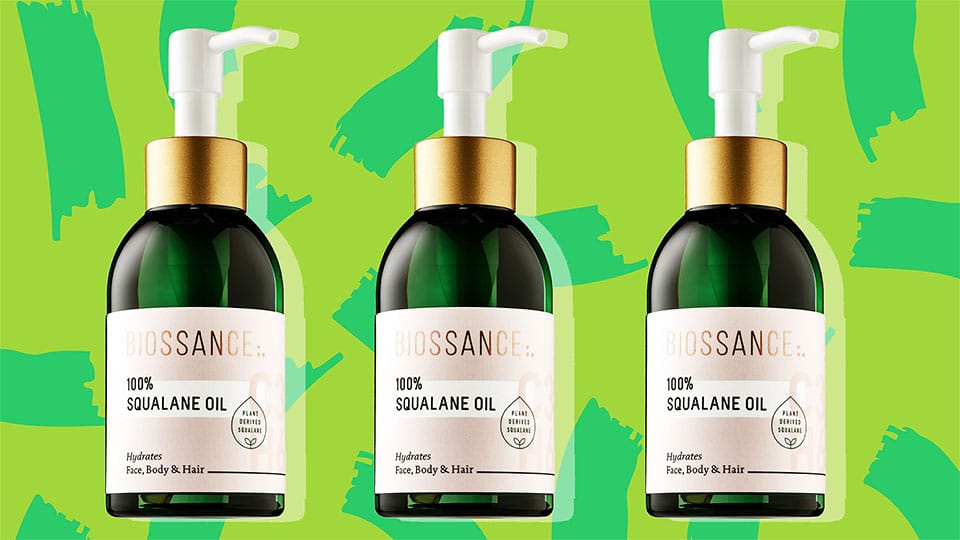Sugar substitutes, also called a sweetener, is a food additive that gives a sweet taste like that of sugar while containing considerably less food energy than sugar-based sweeteners, which makes it a zero-calorie or low-calorie sweetener.
Artificial sweeteners may be derived through the processing of plant extracts or refined by chemical synthesis. Sugar alcohols such as xylitol, sorbitol, and erythritol, are prepared from sugars.
In a study conducted in 2017, sucralose was the most common sugar substitute used in the processing of foods and beverages; it has about 30% of the global market, which was estimated to be valued at about $2.8 billion by the year 2021.
In 1969, cyclamate was barred for sale in the USA by the Food and Drug Administration, although as of 2018, there is evidence to prove that non-sugar sweeteners are unsafe.
When these sugar substitutes are provided for restaurant customers to sweeten their beverages such as tea and coffee, they are packaged in small colored paper packets; in North America, the colors are usually blue for aspartame, pink for saccharin (US) or cyclamate (Canada), yellow for sucralose, orange for monk fruit extract, and green for stevia.
These sweeteners are also a core ingredient in diet drinks to sweeten them without adding any calories. By providing the taste of sweetness without any added calories, artificial sweeteners seem like they could be one of the solutions to effective weight loss.
The average can of sugar-sweetened soda, which is about 12 ounces, can provide about 150 calories, most of them from sugar. The same amount of diet soda has zero calories. The choice should seem like an obvious conclusion on the better alternative.
The American Heart Association (AHA) and the American Diabetes Association (ADA) have given cautious approval to the use of artificial substitutes in place of sugar to battle diabetes, obesity, andmetabolic syndrome, which are all determinants for heart disease.
While they are not magical ammunition, clever use of these non-nutritive sweeteners could help one reduce added sugars in one’s diet, thereby reducing the number of calories one consumes.
Cutting down calories intake could help one attain and maintain healthy body weight, and thereby lowering the risk of heart disease and diabetes.,
All artificial sweeteners are not created the same. The FDA has ratified five artificial sweeteners: sucralose, saccharin, acesulfame, neotame, and aspartame.
Alongside the FDA approved one natural low-calorie sweetener, stevia. How the human brain and even the entire body respond to these sweeteners is very intricate.
One concern is that consumers who use artificial sweeteners may supplant the cut-down calories through other food sources, possibly offsetting weight loss or health benefits, while continuing to eat other foods with high calories as a result of the false sense of security the sweeteners give.
There is also the possibility that these products change the intensity to which we taste food as Non-nutritive sweeteners are far more potent than ordinary table sugar or high-fructose corn syrup.
A miniature amount can give a sweet taste in comparison to that of sugar, without equivalent calories. Over stimulation of the sugar receptors in the tongue from frequent use of these overly-intense sweeteners may reduce the tolerance for more complex tastes.
This means people who frequently make use of artificial sweeteners may start to find less intensely sweet foods, such as fruit, less pleasing, and unsweet foods, such as vegetables, downright inedible.
In other words, the use of artificial sweeteners can make one ignore healthy, filling, and highly nutritious foods while taking in more artificially flavored foods with less nutritional value.
Artificial sweeteners have other adverse effects. Research findings put forward that they may prevent us from associating sweetness with caloric intake.
As a result, we may long for more sweets, tend to choose sweet food over nutritious food, and can lead to weight gain. Studies carried out on Animals indicate that artificial sweeteners may be addictive.
In studies conducted on rats who were exposed to cocaine, and then subsequently allowed to chose between intravenous cocaine or oral saccharine, most of the rats chose saccharin.
Whether non-nutritive sweeteners are safe depends on one’s definition of safe. Studies that lead to FDA approval discredit cancer risk, for the most part.
Although, those studies were done making uses of considerably reduced amounts of diet soda than the 24 ounces consumed daily by many people who drink diet soda. So it’s presumable that the effect of large amounts of these chemicals will have over many years is still unknown.
And there are other health concerns asides cancers. In the Multiethnic Study of Atherosclerosis, everyday ingestion of diet drinks was linked with a 36% greater risk for metabolic syndrome, and a 67% increased risk for type 2 diabetes. Aren’t these diseases that artificial sweeteners were supposed to help prevent in initially?
Although sugar isn’t too bad after all when compared to these artificial sweeteners. It’s all in how it’s processed.
Because Sugar-containing foods in their unrefined form, whole fruit, for instance, tend to be overly nutritious—nutrient-filled, high in fiber, and low in glycemic load.
On the other side, processed, concentrated sugar consumed in enormous amounts increases the blood glucose and insulin levels, oxygen radicals, increases triglycerides, and inflammatory mediators rapidly, and they are all risk factors for diabetes, cardiovascular disease, and other chronic conditions.
Uses of sweeteners
Dental care
Carbohydrates and sugars usually stick to to the tooth enamel, where bacteria feed upon them and multiply faster.
This bacteria convert the sugar to acids that deterioration the teeth. Sugar substitutes, unlike sugar, do not eat away at teeth as they are not fermented by the microflora of the dental plaque.
A sweetener that may have dental benefit is xylitol, which can help to prevent bacteria from sticking to the tooth surface, and thereby preventing plaques from forming and eventually deteriorating the enamel.
A Cochrane study, however, found only low-quality evidence that xylitol in a range of dental products has some benefit in preventing Tooth decays in adults and children.
Glucose metabolism
People with diabetes, particularly diabetes mellitus, have difficulty controlling their blood sugar levels and need to reduce their sugar intake.
Many artificial sweeteners allow sweet-tasting food without spiking blood glucose. Others do release energy but are disgested so slowly, that it prevents spikes in blood glucose.
A concern, however, is that excessive consumption of foods and beverages made more appealing with sugar substitutes can increase one’s risk of developing diabetes.
Cost
Many sugar alternatives are less expensive than sugar in the final food formulation. Sugar substitutes in total cost are usually lower because of their shelf-life longevity and high sweetening intensity.
This allows these substitutes to be used in products that will not perish after a short period of time.
Health effects of sweeteners
Bodyweight
Numerous reviews are of the conclusion that the relationship between body weight and non-nutritive sweetener usage is unstable, as observational studies attempt to show a relation to increased body weight, while random controlled studies indicated a small causal weight loss instead.
Other studies concluded that the use of non-nutritive sweeteners instead of sugar could result in body weight reduction.
Metabolic disorder
A study carried out in 2015 found out that there is no indication that non-caloric sweeteners can trigger metabolic disorders in humans.
Cancer
Studies in 2015 and 2017 respectively indicated evidence of increased cancer risk from consuming artificial sweeteners. Sugar alcohols
Sugar alcohols, also called polyols, are sweetening and bulking ingredients used in the manufacturing of foods and beverages. As sweeteners, they supply fewer calories (about a half to one-third fewer calories) than sugar when digested, are converted to glucose slowly, and do not spike increases in blood glucose.
Types of Sweeteners
The adverse effects of sugar are among one of the few things that all health experts agree on. Because several health-conscious people try to avoid sugar, many other sweeteners, whether natural and artificial, have become prominent.
One of those sweeteners is agave nectar, which is found in various health foods. It is peddled as a natural, health-friendly sweetener that doesn’t alter blood sugar levels. Agave nectar
Agave nectar is precisely a syrup (nectar is a marketing term). It is derived from the liquid found inside the blue agave plant, which is the same plant that used to make tequila.
Agave nectar is made by the following easy steps:
- The fluid is first sourced from the plant.
- The juice is then sieved.
- The filtered juice is pasteurized to further breakdown its components into fructose.
- The fluid is then concentrated into a syrup.
Agave nectar requires multiple refining processes before it can be consumed. Processed food is less healthy because the methods of refining foods often mean losing some (or all) of their natural health benefits.
However, this article will explain how untrue that is as agave nectar is worse for health than plain sugar.
What Is Agave?
The agave plant is originally found in South America and Latin America. Agave is a desert plant farmed to produce tequila and sweet syrup. It was originally believed to have healing properties.
Although agave is regarded as a new phenomenon in the West, it has been used in Mexico for about perhaps thousands of years.
In early times, agave was thought to have medicinal properties. Its sap was furthermore boiled to generate a sweetener known as miel de agave.
The sweetener found in the agave can also be fermented to produce tequila. In fact, tequila is the most popular commercialized use of agave in recent times and considered one of Mexico’s best-known exports. Like many plants, agave possibly has some health benefits.
Nonetheless, refining and processing tend to destroy some, if not all, of these health benefits. The refined agave sweetener that people use today is no exception.
How Is Nectar Made?
The sweetener typically sold as agave nectar would be more accurately labeled as agave syrup. It has little in popularity with the traditional sweetener made by people in Mexico historically.
That said, the first process in making it is the same. The plant is first harvested, cut, and pressed to remove the sugary sap.
This sap contains a high amount of sugar, although it also contains healthy fiber like fructans, which can be linked to beneficial impacts on metabolism and insulin.
However, when refined into a syrup, the fructans are extracted and further processed into fructose by exposing the sap to heat, enzymes, or both.
This process of production is similar to how other unhealthy sweeteners like high-fructose corn syrup are made, which removes all of the beneficial health properties.
The agave sweetener sold commercially is made through this process of treating agave sugars with either heat and enzymes or both, which erodes all its potentially beneficial effects—the end product which leaves a highly refined, harmful syrup.
Low Impact on Blood Sugar
The glycemic index (GI) is a gauge to measure how rapidly the sugar in a food is absorbed into the bloodstream.
Generally, foods with a higher GI rating can result in considerable blood sugar increase and can impact on one’s health negatively.
Distinct from glucose, fructose does not increase insulin levels or blood sugar long terms.
This is why sweeteners with a high amount of fructose are often paraded as “healthy” or “blood sugar- friendly.”
Agave nectar has a relatively low GI — largely because almost all of the sugar in it is fructose, and It has a very little amount of glucose, at least in comparison to regular sugar.
A recent study carried out on mice compared the metabolic consequences of agave nectar and sucrose, or plain sugar, after 34 days. The mice consuming agave nectar gained less weight and had lower blood sugar and insulin levels.
In such short-term research, the glucose levels in plain sugar increase both blood sugar and insulin levels, wherein as fructose does not.
Although the GI is one aspect to consider when analyzing the health effects of sweeteners.
The detrimental effects of agave — and sugar in general — has little to do with the glycemic index but a lot to do with the large quantities of fructose, which agave nectar is very high in fructose.
Dangerously High in Fructose
Sugar and high-fructose corn syrup (HFCS) comprise two simple sugars, glucose and fructose, at about 50% each.
Although fructose and glucose are identical, they have entirely distinct effects on the body.
Glucose is an exceptionally important molecule. It can be found in many healthy foods, such as fruits and vegetables — and even the body produces it to make sure that there is always a sufficient amount.
In fact, every living organism on the earth has glucose because this molecule is essential to life.
Whereas every cell in the body can digest glucose, the liver is the only organ that can digest fructose in an insignificant proportion.
Intake of an excessive amount of added fructose can be detrimental to the metabolic health of the human body and can contribute to type 2 diabetes, heart disease, Insulin resistance, and metabolic syndrome.
This is because the liver gets overfilled and commence the conversion of fructose into fat, which increases triglycerides in the blood. Many studies have found out that some of this fat can reside in the liver and cause fatty liver disease.
This can result in a significant rise in long-term insulin and blood sugar levels, which increases the risk of developing metabolic syndrome, type 2 diabetes, or both.
High fructose consumption can raise levels of LDL cholesterol and oxidized LDL. It may also cause stomach fat accumulation.
It is worth noting that agave nectar contains about 85% fructose, which is considerably more than the amounts in plain sugar.
These numbers do not apply to whole fruits, which are enriched with fiber and make one feel full quickly. The body is well prepared to regulate the small quantities of fructose found in fruit.
So If one must add extra sweetness to one’s diet, agave nectar is likely not the recommended option.
Several other natural sweeteners like stevia, erythritol, and xylitol are much better, healthier choices.
In fact, agave nectar may be the least healthy sweetener in the world. It makes normal sugar look healthy in comparison, which really goes to show how much adverse effect it has on the body.
The probable dangers of processed sugars are widely known and high-fructose corn syrup. And chances are one is on the lookout for possible healthier replacements.
Honey and agave nectar are both popular substitutes right now, but which of them is the healthier choice? They are both all-natural sweeteners and less-refined than white sugar.
In a head-to-head showdown, one might be surprised by the results. Here’s an assessment of the nutritional value and health benefits of these sugar alternatives.
How are agave nectar and Honey made?
Both honey and agave nectar are natural products, but they are different in how they produced, keeping in mind that the less refining process, the healthier.
Honey
Honey is gotten from bees. Those busy little insects are responsible for producing Honey by accumulating the nectar from plants. Different from agave nectar, Honey doesn’t have to be refined before consumption.
But certain brands of Honey are pasteurized to avoid crystallization and to eradicate bacteria before storing. Raw Honey is all-natural and unrefined, making it the healthiest alternative.
Calories
Agave nectar and Honey have about the same number of calories. Both a tablespoon of agave nectar and a tablespoon of Honey contain up to 64 calories.
They are both also a bit sweeter than white sugar, so it doesn’t require much use to obtain the desired sweetness.
Glycemic Index
The Glycemic Index (GI) calculates how much carbohydrate-rich food can increase blood glucose levels. Sugar is a carbohydrate.
GI is a particularly crucial tool for people with diabetes, who have to control their blood glucose levels to stay healthy.
Foods with a higher GI can stimulate the blood sugar by causing an increase and triggering an insulin release after eating. High-GI foods are also be digested rapidly, which can mean feeling hungry again faster than usual.
Here’s a GI breakdown of both Agave nectar and Honey
- Honey: 58
- Agave nectar: 19
- Refined white table sugar (sucrose): 60
The lower the GI value, the less the food increases the blood glucose. So when considering GI index agave nectar is recommendable.
People with diabetes may benefit from agave nectar’s low glycemic index, but keep in mind that the American Diabetes Association recommends limiting the amount of agave nectar in one’s diet.
Sugar components
Honey is made largely out of the sugars glucose (30 percent) and fructose (40 percent). It also comprises smaller quantities of other sugars, including:
- Kojibiose
- Maltose
- Sucrose
- Isomaltose
- Maltulose
- Turanose
Agave nectar, on the other hand, comprises about 75-90 percent fructose. That’s in comparison to about 50 percent for table sugar and 55 percent for the often-criticized high fructose corn syrup.
Although glucose and fructose look very identical, they have entirely unique effects in the body. Unfortunately, fructose is linked to many health problems, including:
- Obesity
- Diabetes
- Fatty liver
- Amnesia
- High triglycerides
Unlike other types of sugar, fructose is absorbed by the liver. Consuming too much fructose can stress the liver and cause it to produce hazardous triglycerides. High fructose foods can lead to the accumulation of stomach fat, which is bad for one’s overall heart health.
A recent study established that rats that consumed high-fructose syrups amassed significantly more weight than rats that consumed table sugar, even when their calorie intake was the same. Honey is considered better from this part.
Other health benefits
Aside from being delicious, Honey has also been found to have other health benefits. It has been shown to be effective in reducing frequency of cough, calming sore throats, and improving the sleep quality of coughing children.
Honey is also anti-viral, anti-fungal, anti-bacterial, and can help reduce seasonal allergens when the Honey is from one’s local area. Honey also never spoils.
Honey also contains a fair amount of phytochemicals that may serve as antioxidants. In general, the darker the honey, the higher the antioxidants. Antioxidants are believed to help rid the body of harmful free radicals.
Research shows that antioxidants can help prevent certain types of cancers, fight aging, and lower one’s risk for cardiovascular disease. The most benefits are seen in raw Honey that is not pasteurized.
There are no major health benefits attributed to agave nectar, so Honey gets all the brownie points. Honey should not be given to infants under one year of age due to the risk of botulism spores.
Bottom line
Honey is the clear winner. But both honey and agave nectar are caloric sweeteners and offer little added nutritional value. Honey is better than agave nectar because it is:
- Higher in antioxidants
- Lower in fructose-content
- Less processed and other health benefits
Agave nectar is marketed for its low glycemic index, but its high fructose content cancels out its potential upsides.
If one don’t like the taste of Honey, or one’re a strict vegan who doesn’t eat Honey, the differences between the two aren’t significant enough to warrant making the change.
In the end, it’s not so much about the type of sweetener one choose, but rather the amount one consume. All sweeteners, including Honey, should only be used sparingly. Consuming excessive amounts of sugar can lead to:
- Obesity
- Tooth decay
- High triglycerides
- Diabetes
The American Heart Association advises limiting added sugars, including agave syrup, corn syrup, honey, cane sugar, or brown sugar to no more than 24 grams, which is about six teaspoons for women and 36 grams which is about nine teaspoons for men per day.
Many sugars and sweeteners are branded as healthy alternatives to regular sugar by their manufacturers.
Those on the lookout for means to cut calories and reduce sugar intake often turn to these products in their search for a better substitute to sweeten baked goods and beverages.
However, in some instances, these replacements may do more harm than good when it comes to one’s health.









